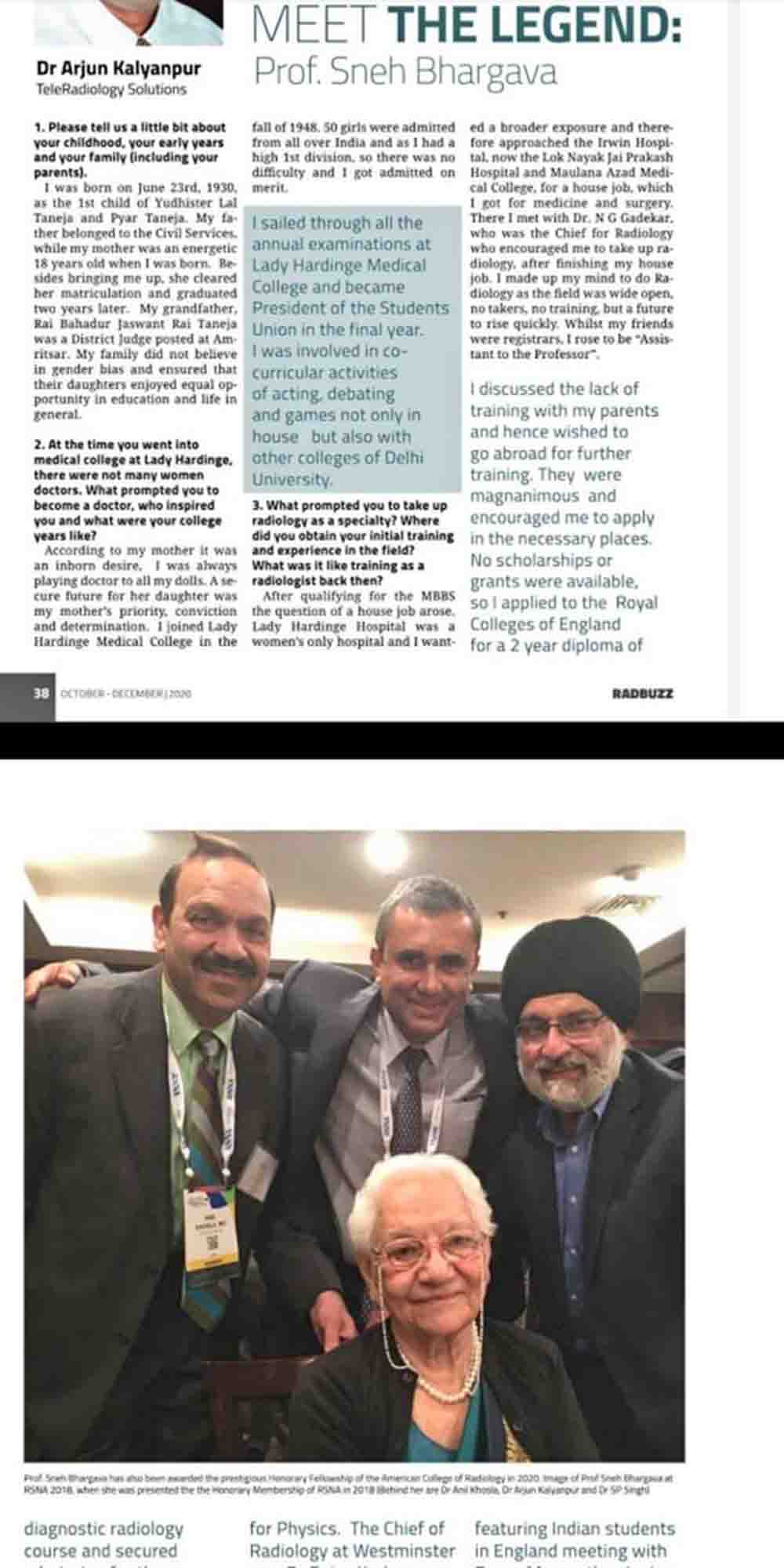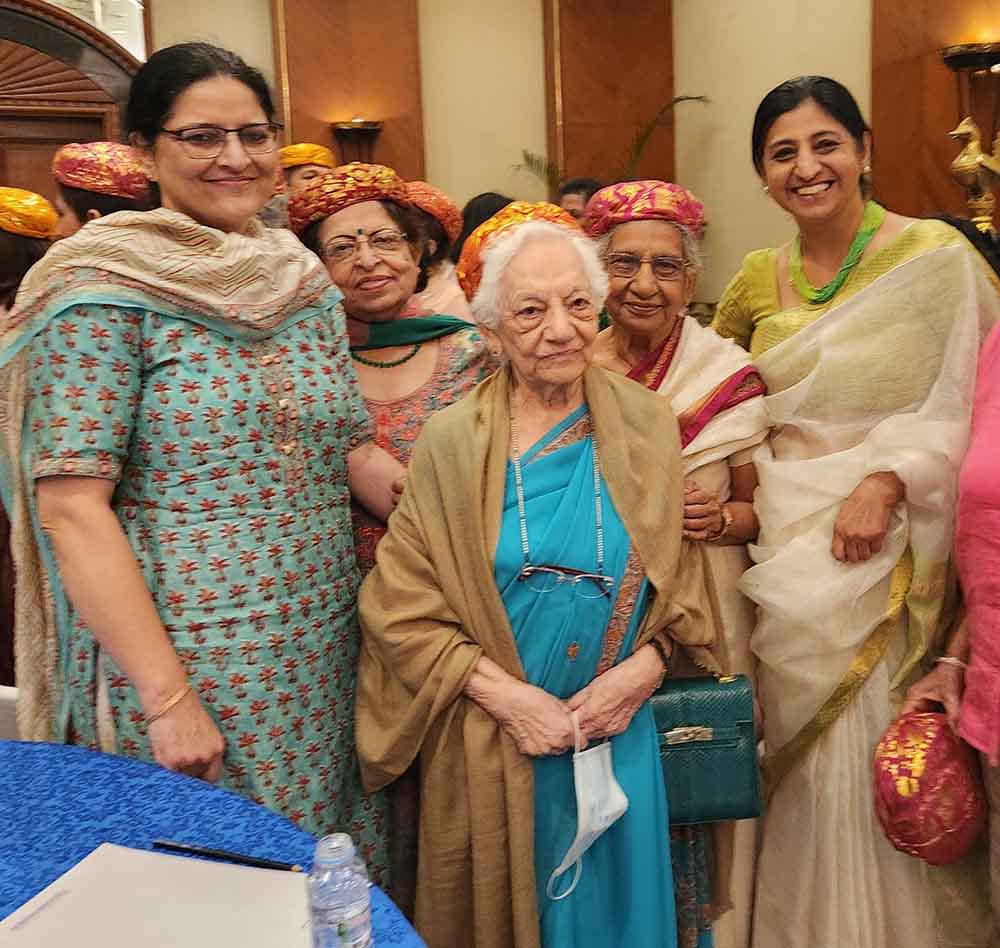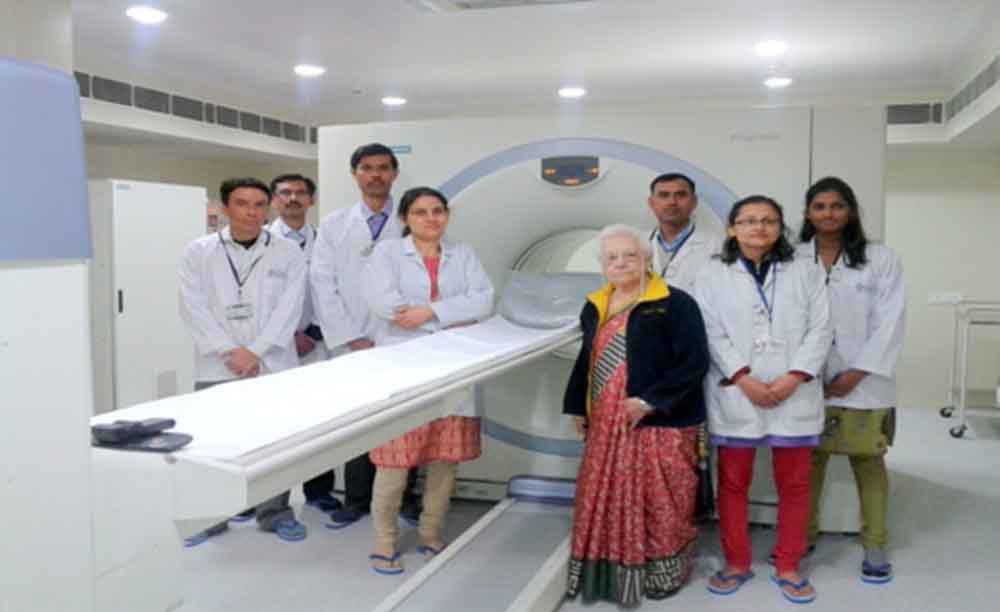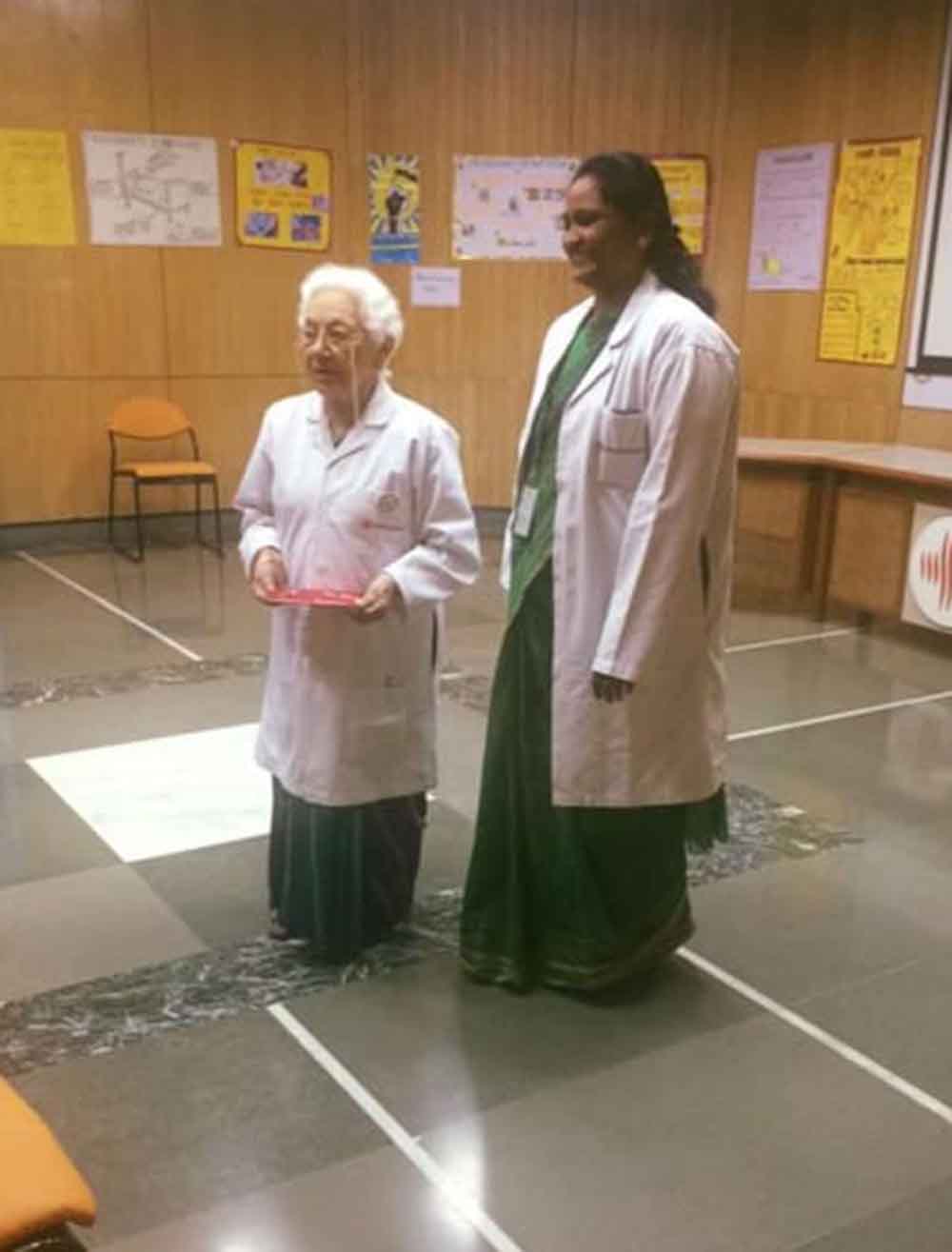It's exciting enough to read about an active nonagenarian, but you know you've hit gold when the nonagenarian is an enigmatic scholar and educator. Dr Sneh Bhargava, India’s first female radiologist was also the first female director in the 60-year history of AIIMS. Dr Bhargava broke gender stereotypes by becoming a radiologist, in addition to a doctor. Her life is a collection of eye-opening concepts, especially for all aspiring scientists and physicians.

Dr Bhargava was born in 1930, shaped by her mother's principles and values with the luxury of equal opportunity and education. She decided to pursue a medical degree in 1948 by enrolling in The Lady Hardinge Medical College, one of the most prominent medical schools for women. This prompted her to start a remarkable journey with radiology and imaging after graduation. In order to hone her talents and gain knowledge from the top radiologists of the day, she travelled to England in 1955. When she returned to India, her career was on track, and she was hired as an assistant radiologist at Irwin Hospital, which is now LNJP.

At that time, Dr Bhargava was appointed Assistant Professor in the radiology department of the prestigious AIIMS. She brought to the table an ability to design the curriculum and provide standards for the post-graduate radiology program. Dr Bhargava also helped create a number of subspecialties and guided numerous students in their studies. Her development was unaffected by the whims of institutional politics, and in 1984 she was appointed the AIIMS's first and only female director. She has won numerous honours and recognitions, and headed several committees, but closest to her heart is the Padma Shri, one of India's highest civilian honours.

Women face significant challenges in every workplace, and radiology is no exception. Even though women make up a sizable portion of radiologists in India, certain variables combine to create a workplace that is not particularly supportive of their professional development. As a result, only a small number of female radiologists succeed in reaching the highest levels of their companies.

It is necessary for female radiologists to band together and create a sisterhood that helps and guides its members. However, by actively talking with and including their male colleagues in their work, female radiologists can urge them to be more supportive. The issue is not that there aren't enough women in academia; rather, it's that very few of them are able to advance to the highest levels within academic institutions. Mentoring is the only way to get past this hurdle, and women who have gained a certain amount of authority must support other women with potential.
The radiologist's job has undergone significant change. Even though scientific and technological advancements have altered many aspects of medicine over the past six to seven decades, advancements in radiology and imaging have likely had the biggest impact on how we practice medicine. With all of the multi-modality cross-sectional imaging at our disposal and image guidance available for intervention and therapy, it has evolved from backlog processing offices to the epicentre for diagnosis and treatment.
Image source: AIIMS, Dharamshil Cancer Foundation, TWI, Facebook